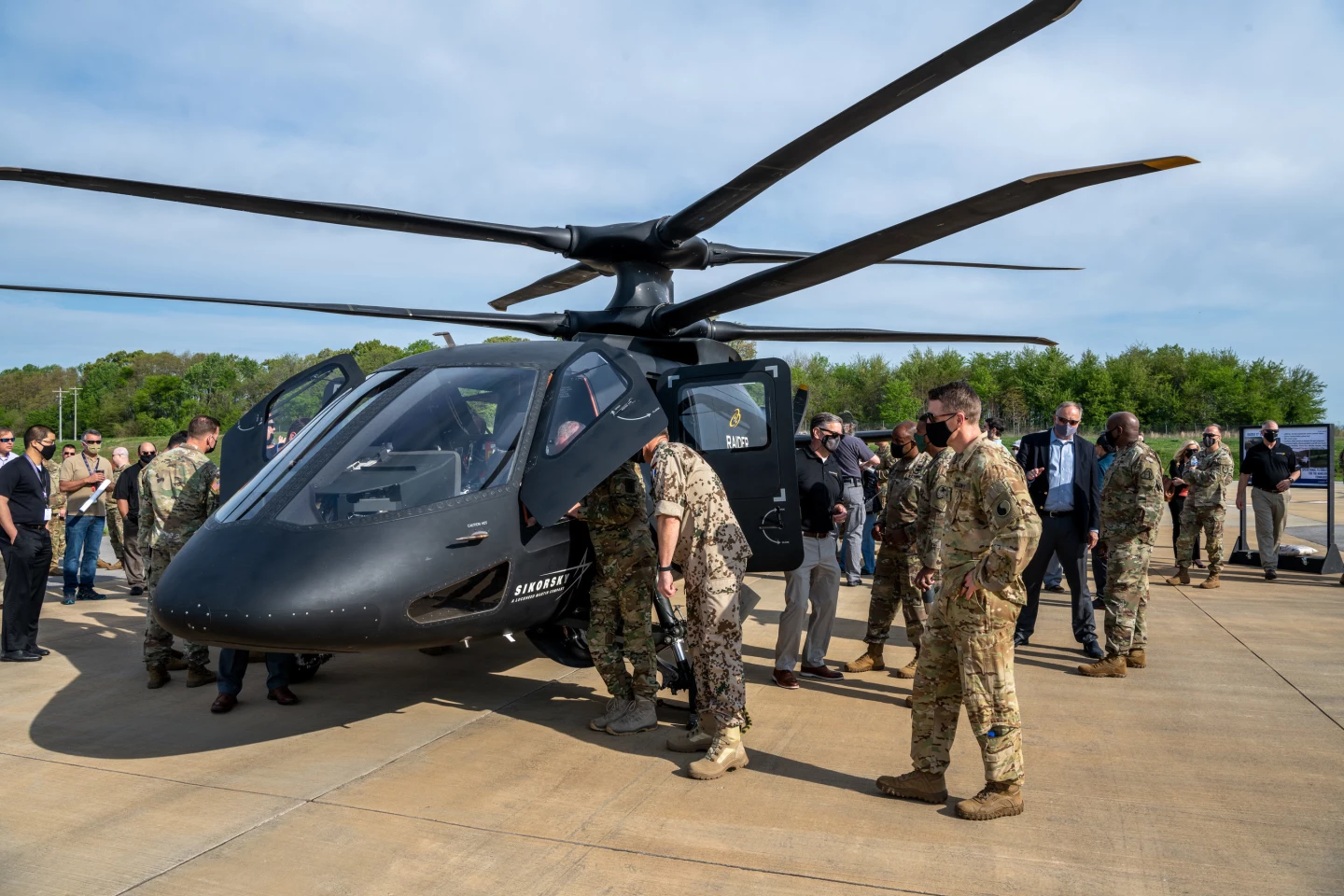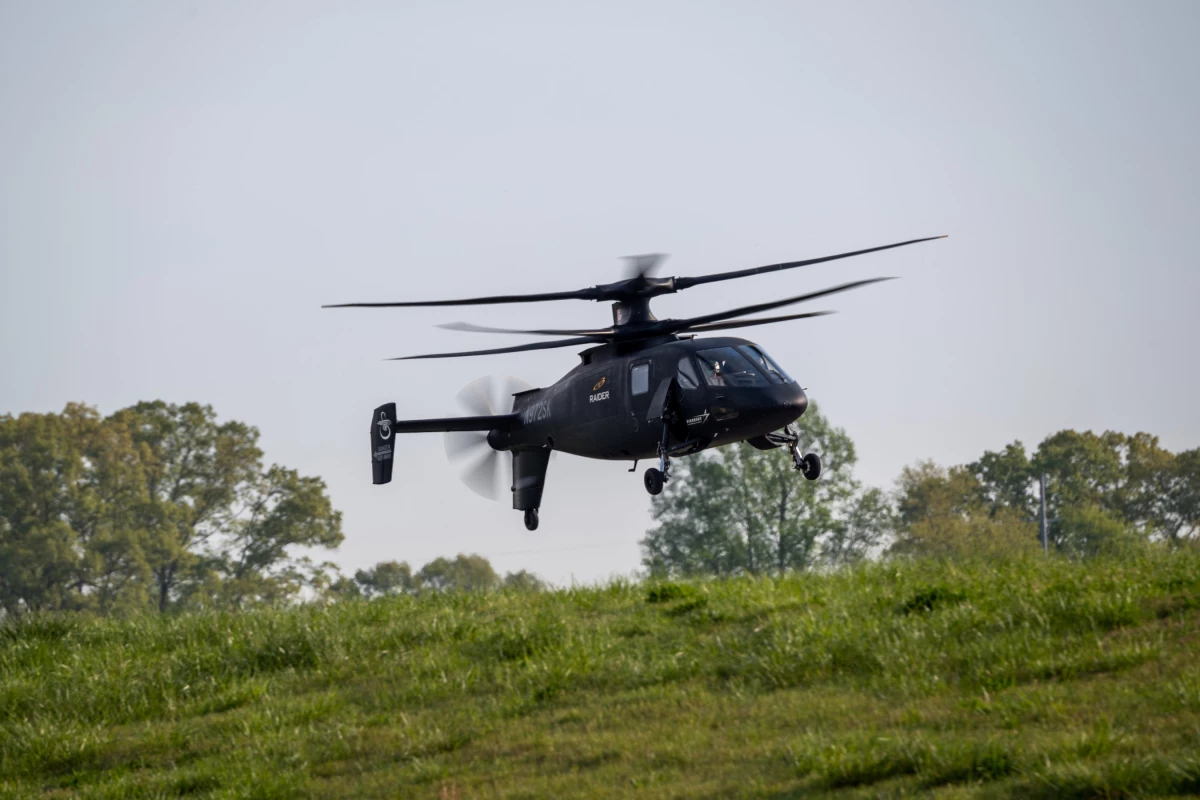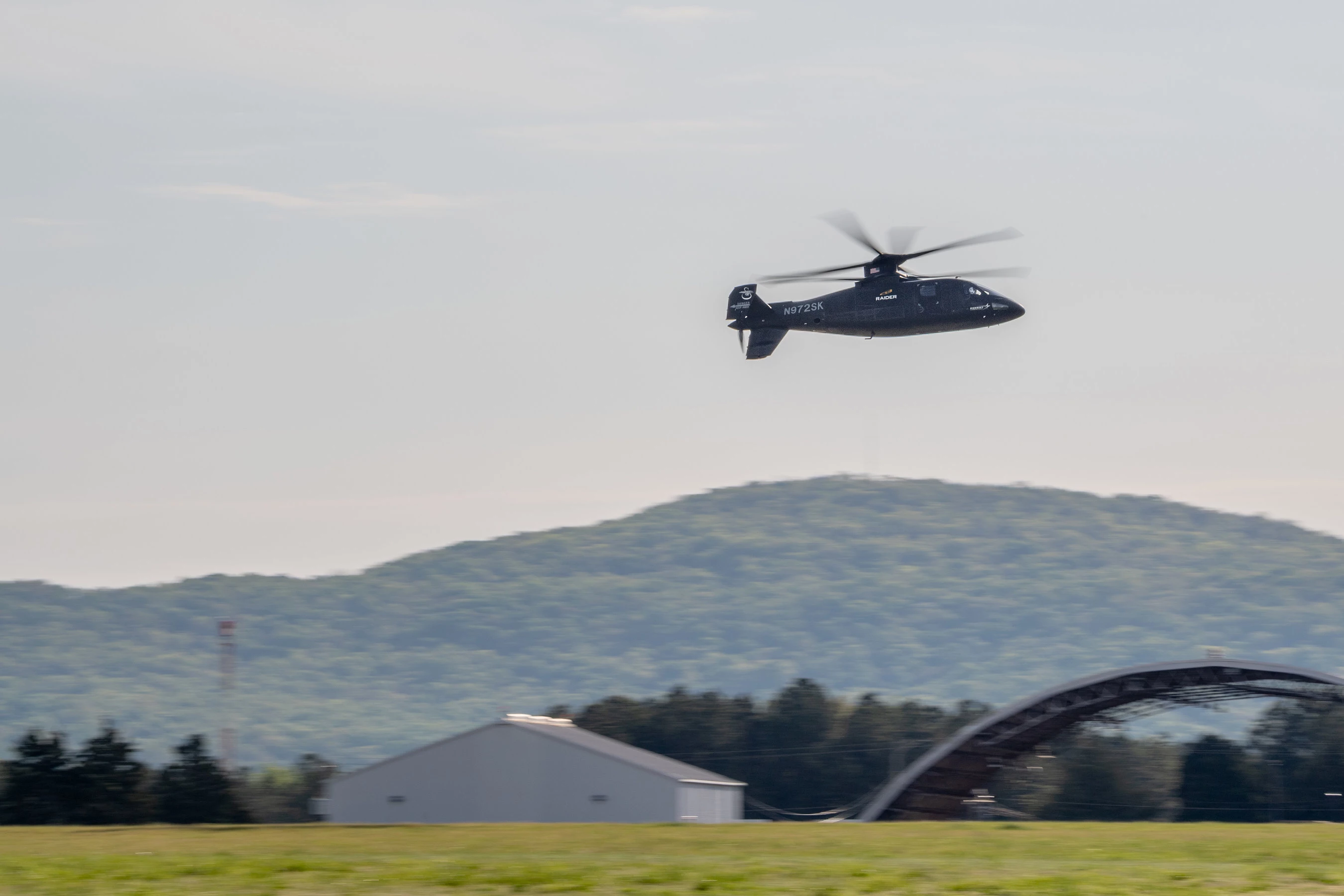Lockheed Martin subsidiary Sikorsky Aircraft's S-97 Raider advanced prototype helicopter has shown off its agility in two demonstration flights for the US Army at the Redstone Arsenal in Huntsville, Alabama. With Sikorsky pilots Christiaan Corry and Bill Fell at the controls, the Raider carried out low-level maneuvers and high-speed runs on April 13 and 15, 2021.
Sikorsky's candidate for the Future Attack Reconnaissance Aircraft (FARA) program under the US Army's Future Vertical Lift (FVL) initiative, the S-97 Raider is a compound helicopter based on the company's X2 technology demonstrator. It uses variable speed rigid coaxial main rotors that can tilt independently of one another and a variable-pitch pusher propeller for improved horizontal speed, hovering, and low-speed maneuverability. It also uses a fly-by-wire system and dynamic anti-vibration actuators to reduce shaking.
In terms of specifications, the Raider can carry a crew of two in a side-by-side configuration, along with up to six passengers. Powered by the same General Electric YT706 turboshaft engine used in the MH-60M Black Hawk helicopter, it can put out 2,600 bhp (1,900 kW), giving it a cruising speed of 250 mph (410 km/h, 220 knots) and a range of 350 miles (570 km) with external weapons load. The standard armament will be a .50 caliber machine gun and seven-round rocket pods.

The Raider is also designed to provide commanders with a flow of maintenance data and self-diagnosis that, working with Sikorsky's Fleet Decision Tool, allows the helicopter to provide solid information as to how many of the aircraft will be available for missions at any one time.
"Flying Raider continues to amaze me," says Corry, a former US Marine. "The combination of the coaxial rotors and the propulsor is really the enablers for this transformational technology. As we demonstrated today, in low-speed flight, we are as capable as a conventional helicopter, but when we engage the prop, we are able to operate in a whole new way – it's much more like flying an airplane."
The video below shows the S-97 Raider going through its paces at Redstone.
Source: Lockheed Martin







